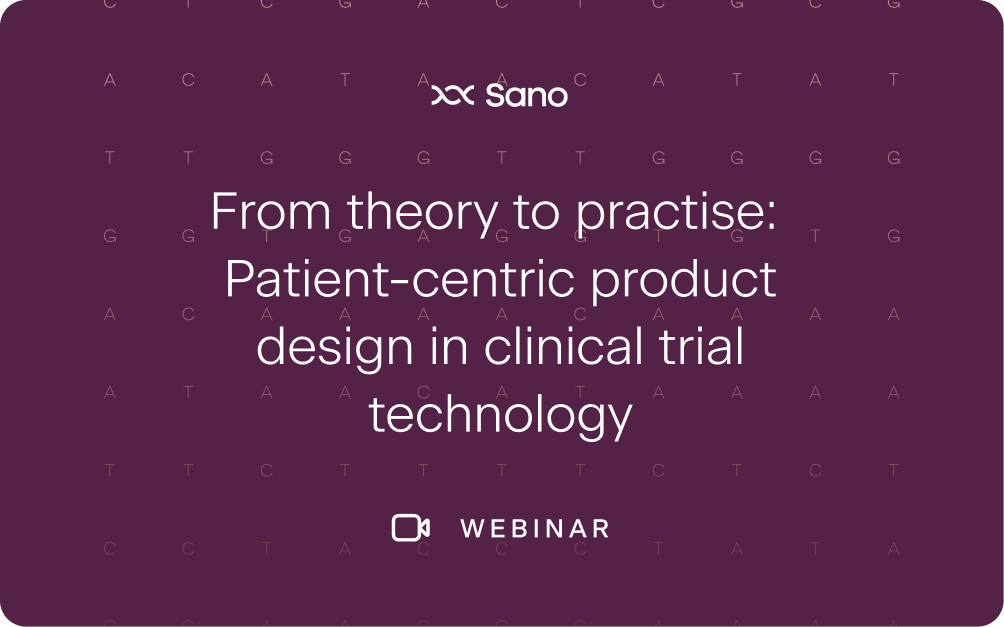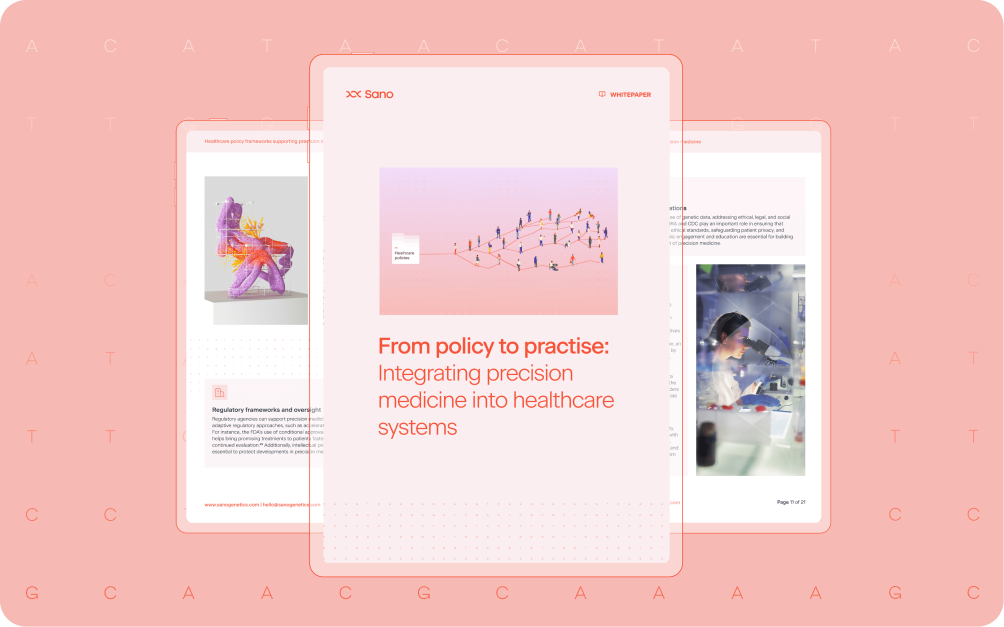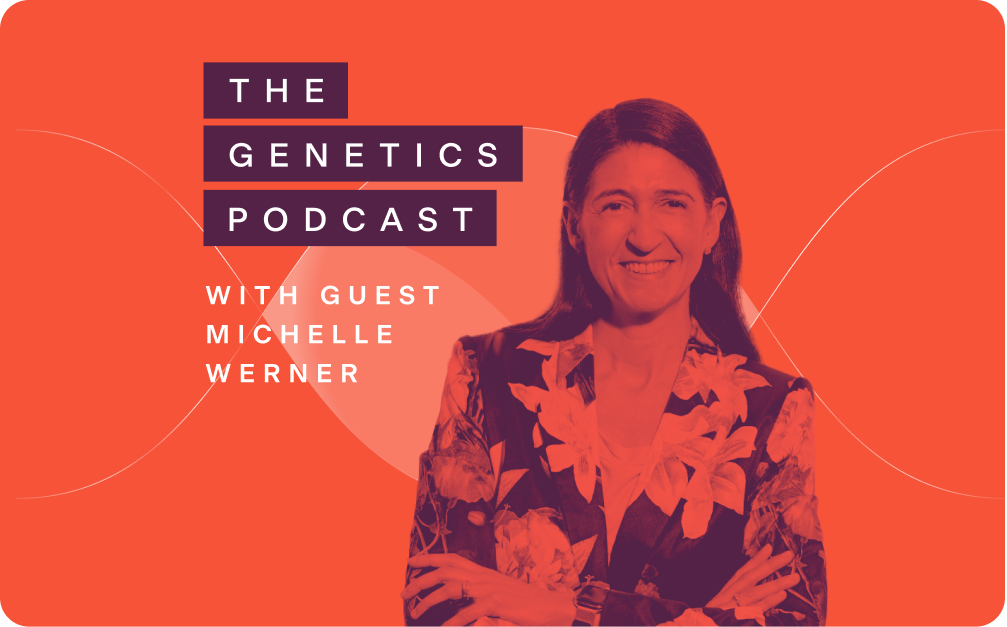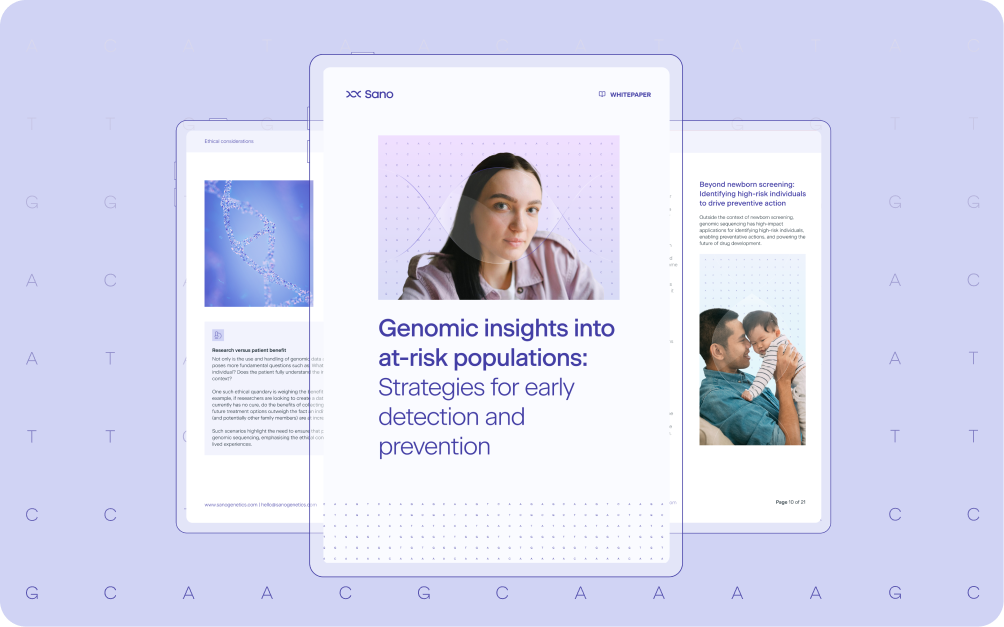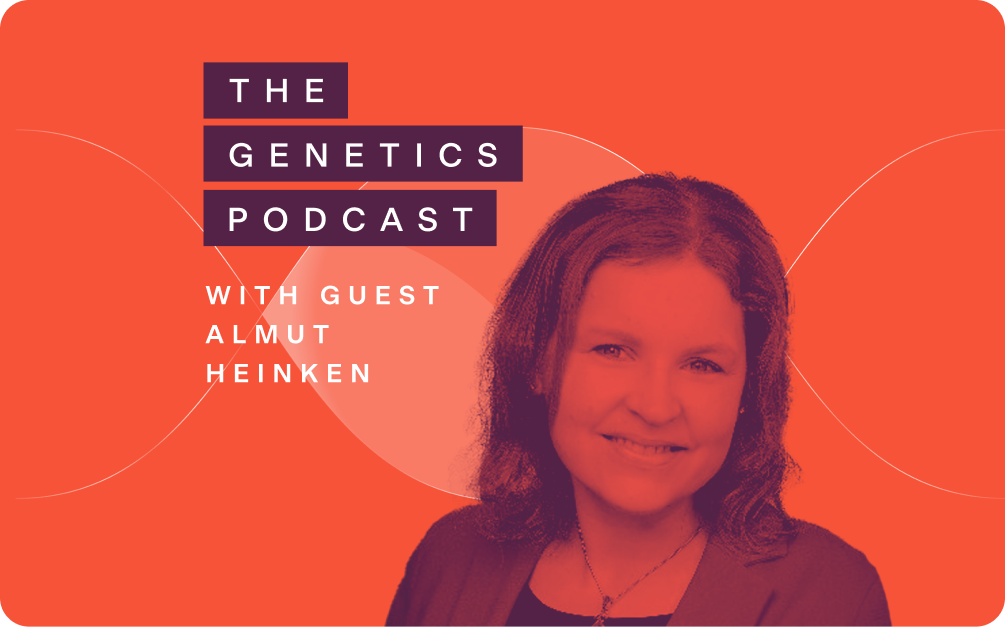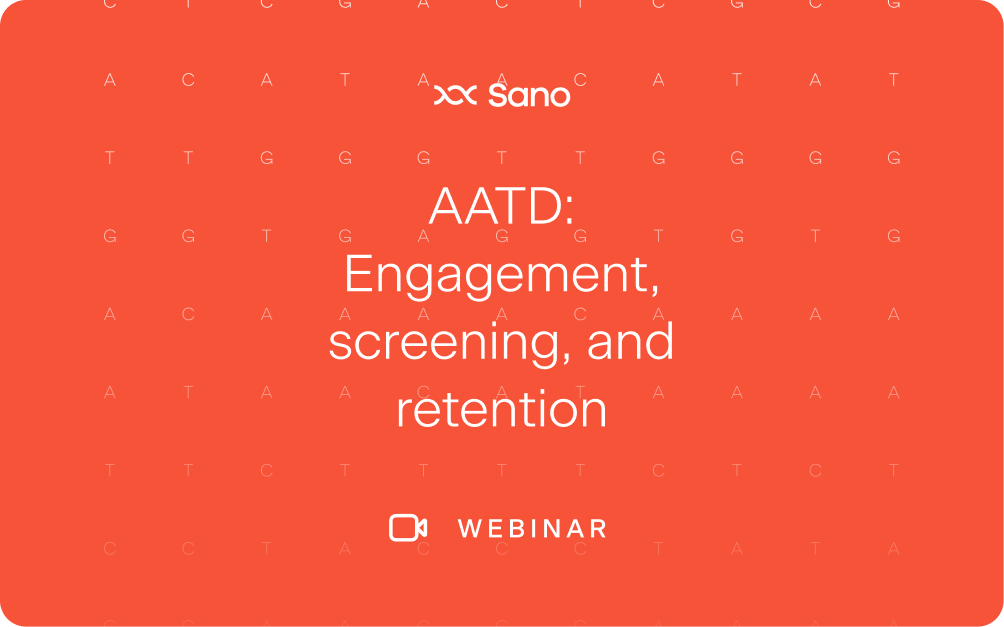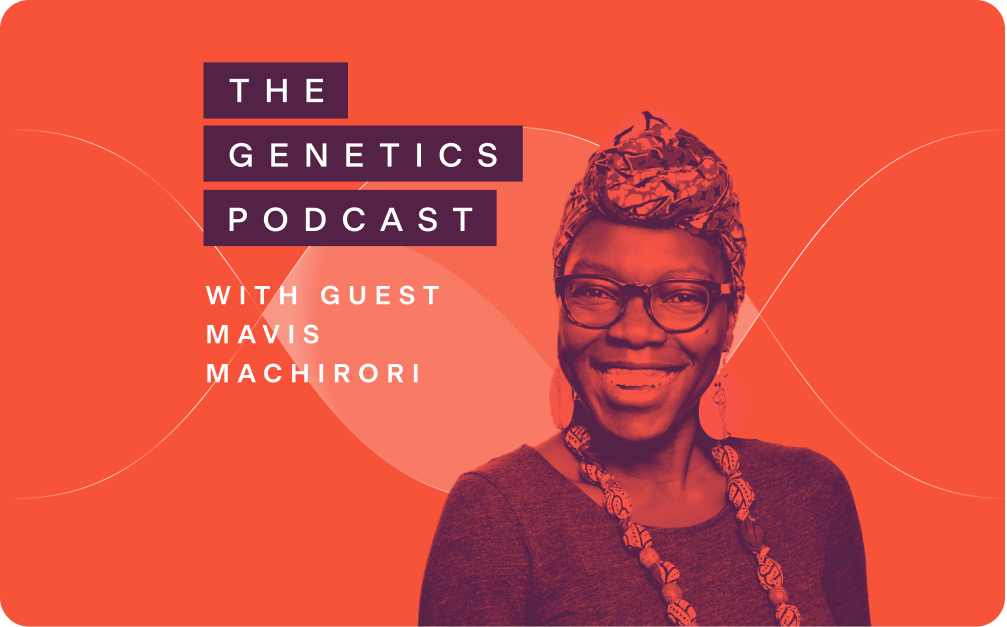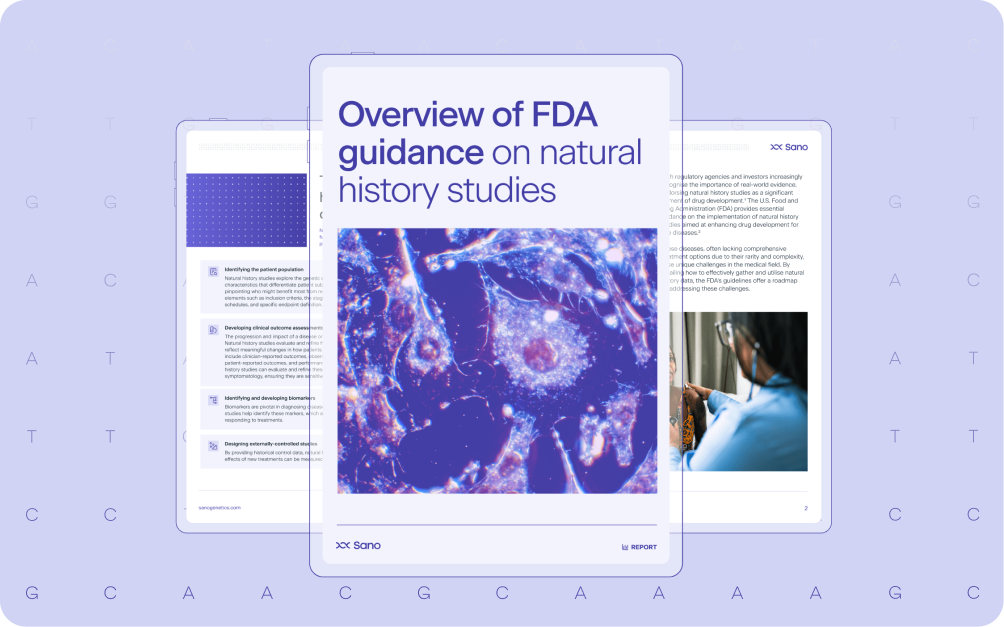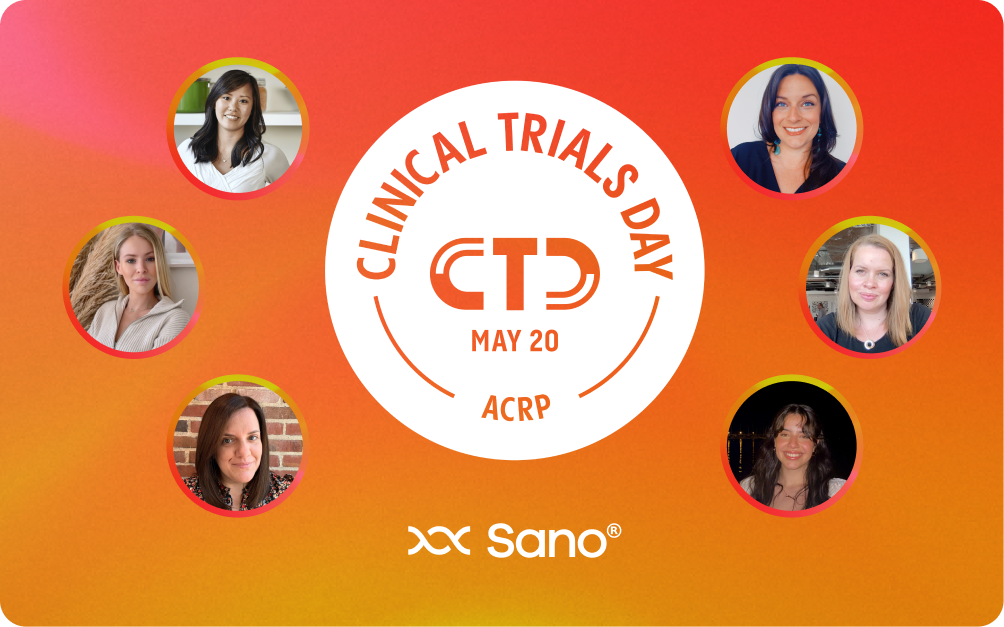Clinical research blog
Explore our blog for insights into the big questions in precision medicine and clinical research.
In the recent webinar hosted by Jess Burrows, Product Designer at Sano Genetics, and Marisa Ngbemeneh, Product Manager at Sano Genetics, we took a deep dive into the importance of patient-centric design in healthcare. The conversation highlighted how prioritising the patient experience can significantly improve clinical trials and research initiatives.
Precision medicine is transforming healthcare by tailoring treatments to individual patients based on genetic, environmental, and lifestyle factors. Our latest whitepaper, "From policy to practise: Integrating precision medicine into healthcare systems," highlights how effective policies can make this a reality.
In the latest episode of The Genetics Podcast, Sano CEO Patrick Short had a fascinating conversation with Michelle Werner, CEO of Alltrna and CEO/Partner at Flagship Pioneering. Michelle and her team are pushing the boundaries of tRNA therapies, aiming to provide scalable treatment options for people with rare and ultra-rare diseases.
To fully harness the potential of genomics for early detection and prevention in at-risk populations, a comprehensive and strategic approach is crucial. Below, we outline key strategies to leverage genetic discoveries for driving early detection and prevention, particularly in vulnerable groups. The ultimate goal? To improve health outcomes and alleviate the burden on healthcare systems.
Genomics has come a long way since the first human genome was sequenced in 2003. Today, sequencing a genome is not only faster but also significantly more affordable, thanks to advancements from industry leaders like Illumina and Oxford Nanopore. This progress has opened new avenues for research and precision medicine, particularly in identifying and supporting at-risk populations.
In the latest episode of The Genetics Podcast, Sano CEO Patrick Short had the pleasure of speaking with Almut Heinken, a junior professor at the INSERM Institute of Nutrition, Genetics, Environment, and Risk Exposure at Université de Lorraine. Almut’s fascinating research sits at the intersection of the microbiome, human genetics, drug discovery, and pharmacogenomics.
In this webinar, "Alpha-1 Antitrypsin Deficiency: Engagement, screening, and retention," Sano Senior Project Manager, Hayley Holt, shares a case study on our work with an industry-leading sponsor to deliver genetically-qualified volunteers for a precision medicine clinical trial focused on Alpha-1 Antitrypsin Deficiency (AATD). The webinar explores the methodologies used and describes the success of the project.
The Genetics Podcast recap: Championing diversity and accessibility in genomics with Mavis Machirori
In the latest episode of the Genetics Podcast, Sano CEO Patrick Short had the pleasure of speaking with Mavis Machirori, a senior researcher at the Ada Lovelace Institute and co-founder of Genetics Engage.
Developing treatments for rare diseases involves unique obstacles due to the rarity and complexity of these conditions. To address these challenges, the FDA offers guidance on conducting natural history studies. These studies are essential for comprehending disease progression, identifying patient subgroups, discovering biomarkers, and refining clinical outcome assessments – all of which enhance the effectiveness and design of clinical trials.
In honour of Clinical Trials Day, we're sharing some reflections from our team at Sano about why we do what we do. Clinical Trials Day marks the anniversary of James Lind's first controlled clinical trial in 1747, a key moment in medical history. For us at Sano, it’s a chance to celebrate the work we’re passionate about and the incredible people who make it possible. These quotes reflect some of our personal journeys and the reasons why we’re dedicated to advancing precision medicine. From living with genetic conditions to striving for groundbreaking discoveries, our team’s stories show the heart and commitment behind our mission to transform healthcare.

